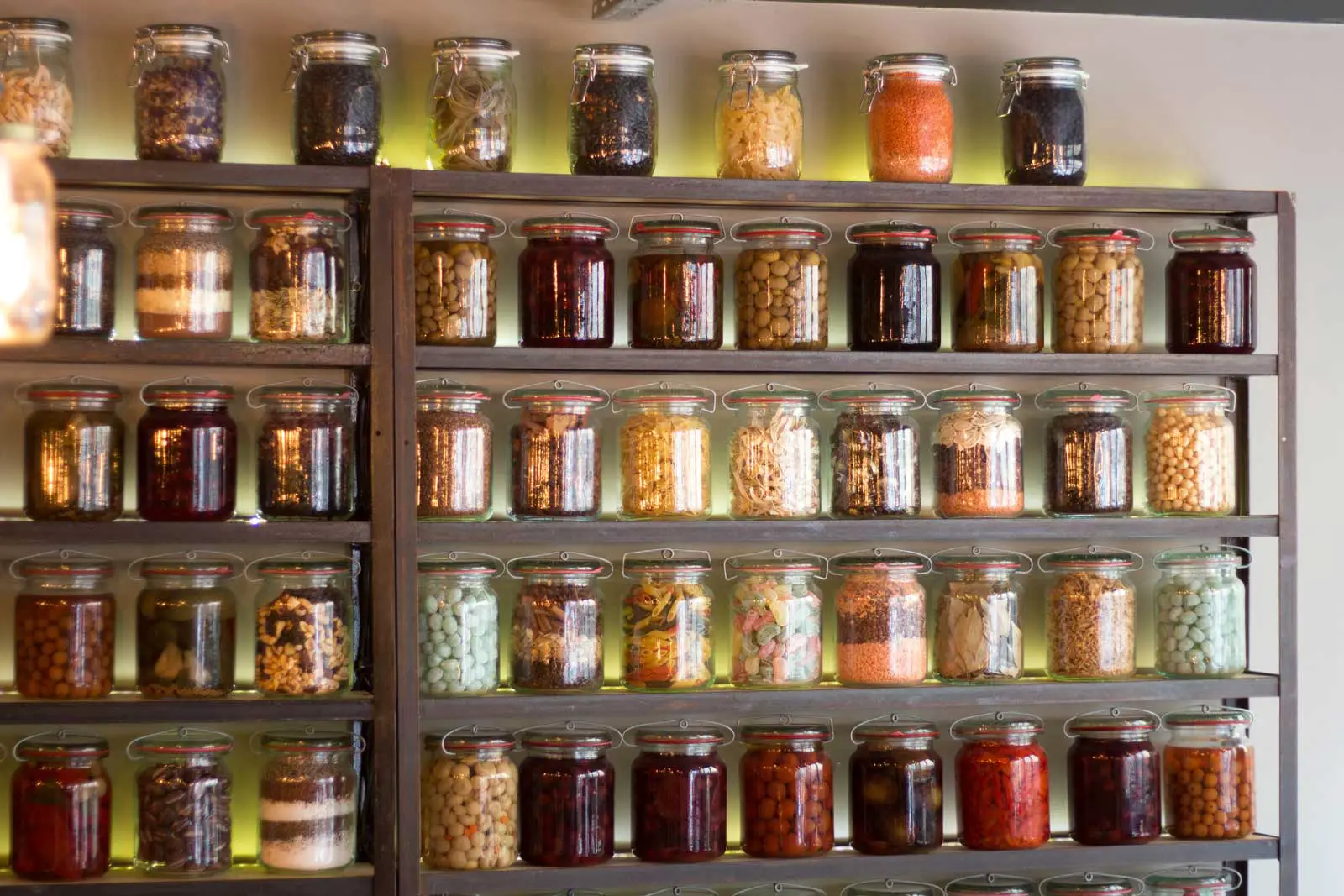Professional organizers advise sorting through pantry items and tossing anything past its expiration date. Designated storage areas like snack bins, coffee stations, or shelves for foods (like muffin mix or salsa ) is also beneficial.
Opt for clear food storage containers to organize odd-shaped items and maintain an organized shelf display. That way, family members can quickly locate their favorite snacks or ingredients without taking everything out from under their shelves first.
1. Keep it simple
Making time to assess what you own and need can be daunting, but the results will make your pantry more organized. Once you’ve cleared out items you no longer need or have expired, start rebuilding!
Take cues from your local grocery store and store similar items in clusters, like cooking oils and multiple varieties of nut butter close together; baking items such as sugar and cocoa powder in one area.
Consider using clear containers for food storage to easily see what you have, helping reduce time spent hunting down that elusive bottle of tomato sauce. Labeled bins can help everyone understand where things belong – with many fun options available on Etsy for unique labels!
2. Utilize your wall space
A pantry is the ideal location for hanging a pegboard to store items such as brooms, pans, reusable grocery bags and other kitchen tools. Attaching hooks will keep these out of reach of children.
If you have the space, use shelves for containers to organize and store food items. Abramovici recommends choosing bins with handles so they are easier to pull off of shelves; she also loves clear storage containers for pasta or grains as a stylish touch.
If you have an awkward corner space to work with, turning table shelves may help make life easier. They allow for greater visibility and quick item access while being an ideal addition for shelves above eye level; storing more items in less space while still remaining at an accessible height makes sense; grouping like items together (cooking oils, nut butters, spices or pastas) saves time searching.
3. Store baking items together
An organized pantry makes finding ingredients and snacks much simpler when cooking for yourself or others, as well as making meal planning, shopping and prep easier. Here are a few useful tips on keeping your pantry organized:
Transfer flours, sugars and grains into clear canisters so as to bypass reading labels (for more on Classy Clutter see Classy Clutter). Use stackable food storage containers on deep shelves in order to maximize vertical space; group similar functions together such as bakeware/cookware on lower shelves while foods are kept on upper ones.
Organise deep pantry drawers using draw dividers and reusable chalkboard labels, while setting aside one wall as a command center where mail, school notices, etc. may be stored. Install hooks at the side of your pantry door to hang oven mitts and towels (for more details visit The Navage Patch). Revamp labels as necessary while regularly cleaning shelves and floors will help ensure the best condition of your pantry.
4. Have enough “blank space”
Pantrys are hardworking spaces that can quickly become disorganized. Regular cleaning and reorganizing should take place to eliminate food debris, such as food crumbs or produce that has gone bad, or any expired items.
Utilize can organizers to keep canned goods organized and visible, and install shelf-risers for more storage space. Small bins placed strategically around your house may help store extra trash bags, paper towels or bulk-sized items.
Transfer cereals and chips into clear jars or bins so they’re easier to locate; this will also let you know when an item runs low.
If possible, install or hang a spice rack on the door of your pantry to easily see all your go-to spices without them getting lost in a drawer or cabinet. This way you won’t forget anything!




